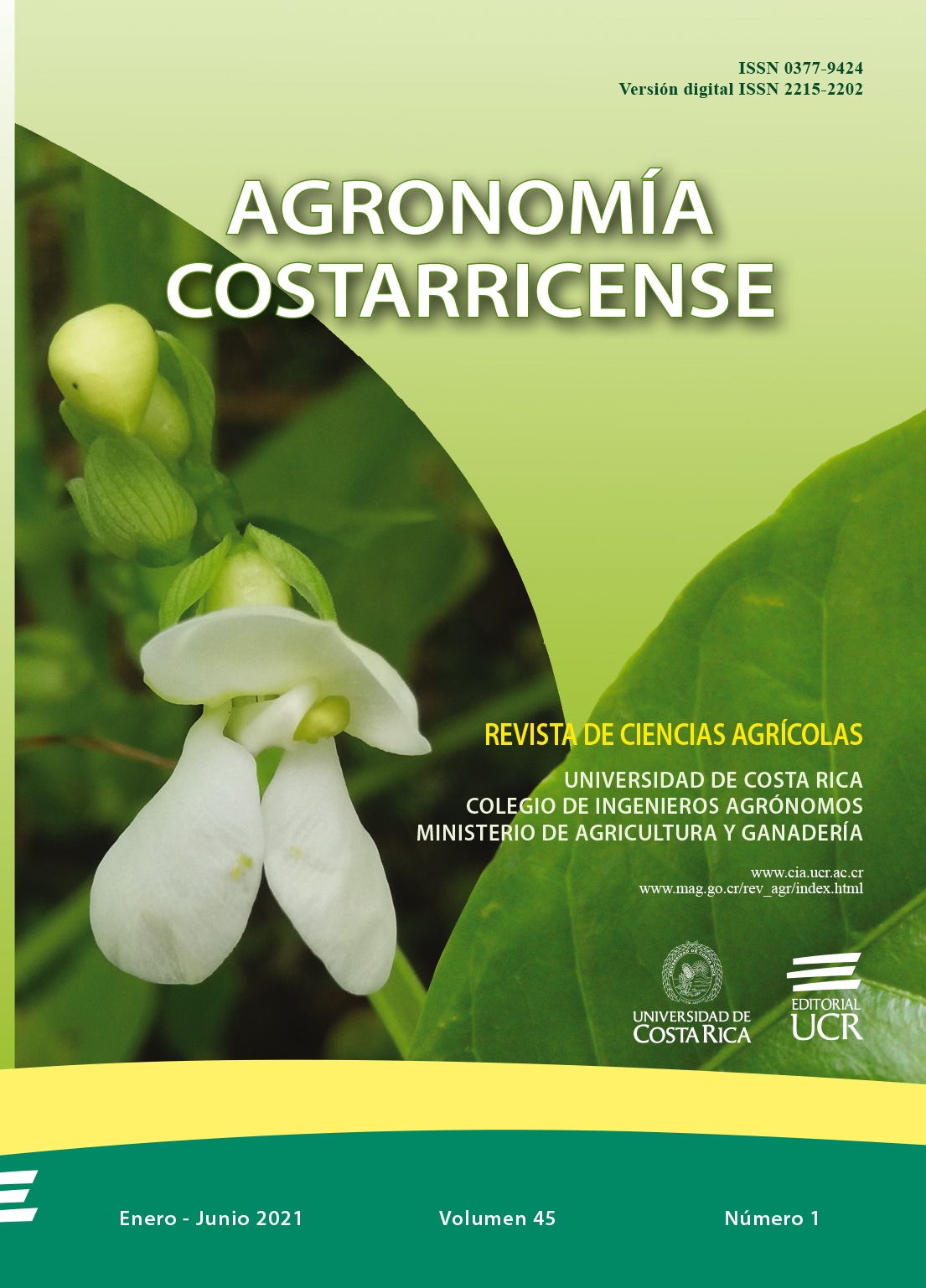Abstract
Introduction. Although red and black beans (Phaseolus vulgaris L.) are the most common dry bean commercial types in Costa Rica, white beans are sold in a niche market that pays higher prices for them. For profitable production, producers requiere white- seeded cultivars more resistance to pathogens and with erect plant architecture. Objective. To describe the development process and the main characteristics of the Surú cultivar. Materials and methods. This cultivar was developed from a single cross between the improved white bean breeding line PAN 68 and the small red cultivar “Bribrí”. This initial cross was made in 2002 at Escuela Agrícola Panamericana in Honduras. Then, it was evaluated in Costa Rica from 2004 to 2008 by the Instituto Nacional de Innovación y Transferencia en Tecnología Agropecuaria and the Universidad de Costa Rica. The selection from F2 to F6 was carried out at the Estación Experimental Agrícola Fabio Baudrit Moreno, and then five trials and 11 validation plots of 1500 m2 each were planted under producer conditions in order to determine characteristics and agronomic performance. The cultivar was released on December 10th, 2009 in Guagaral, Buenos Aires, Puntarenas. Results. Surú is a white-seeded common bean cultivar with a yield of 1350 kg.ha-1 under producer management, with erect architecture (type II-a), intermediate resistance (value <5) to Pseudocercospora griseola (angular leaf spot), resistance to common mosaic virus (BCMV) (dominant gene I) and Bean golden yellow mosaic virus (BGYMV) (bgm-1 gene and SW12 QTL), and susceptibility to Thanatephorus cucumeris (wet blight) and Aphelenchoides besseyi (amachamiento) with a value ≤7. Conclusions. Due to its agronomic characteristics, Surú is a suitable cultivar for manual planting systems (by “espeque”) and semi-mechanized production systems used in Costa Rica. Planting is recommended during the second season of the year (October) in the Brunca region in order to harvest during the dry season (December - January).

